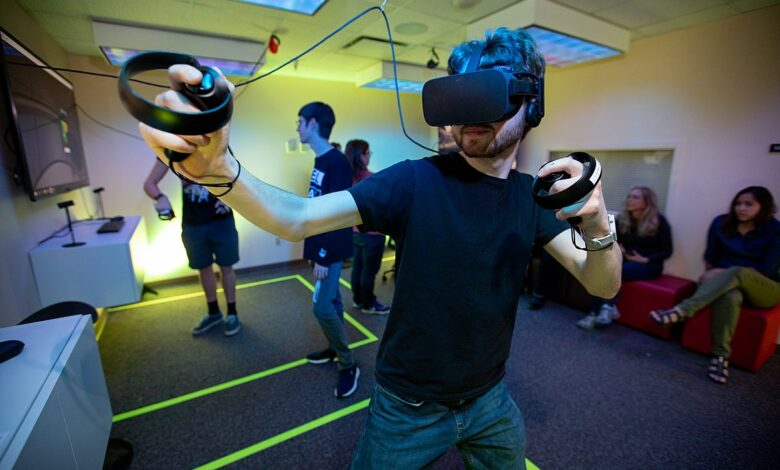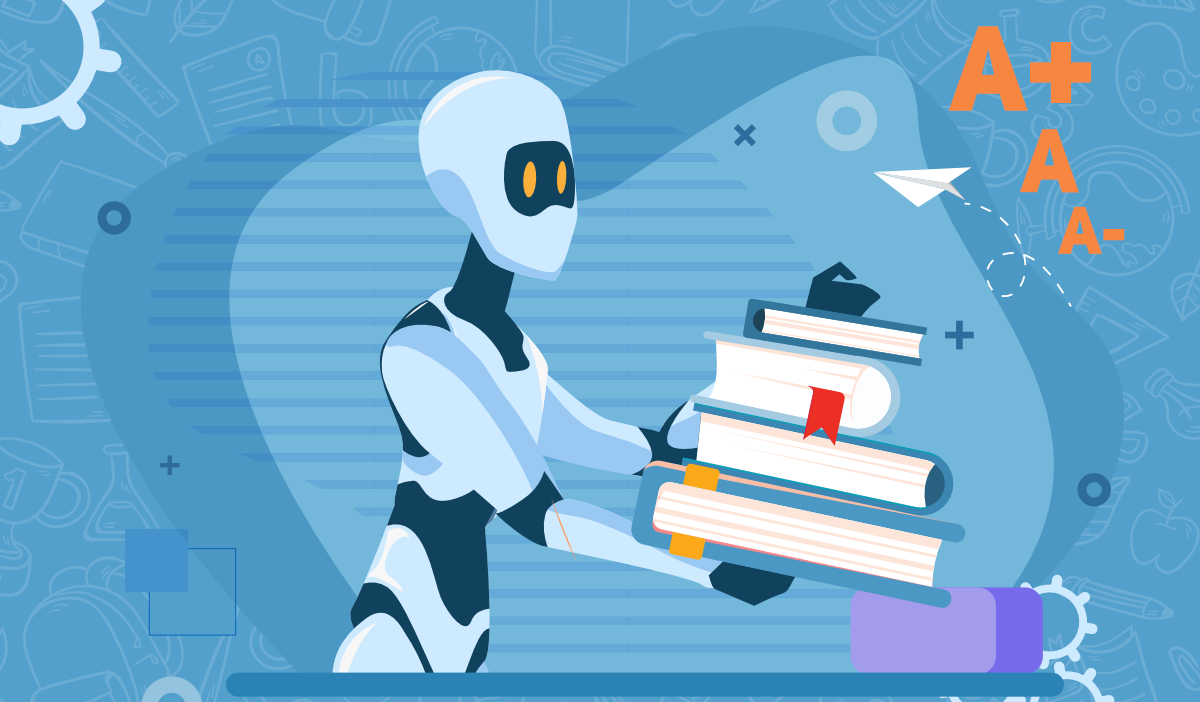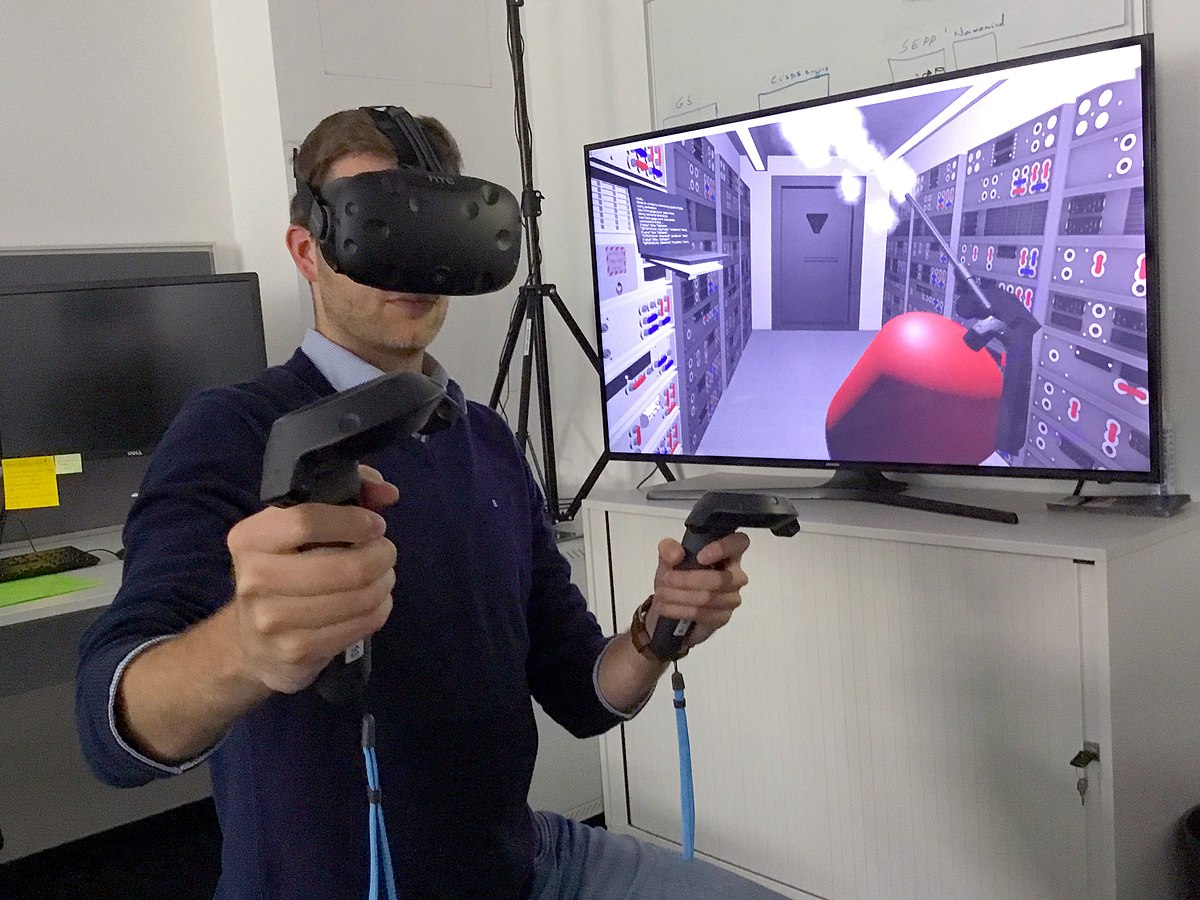What The Future Of AI and VR Has In Store For The World Of Education

So what is AI? AI is an abbreviation of the words Artificial Intelligence. Artificial Intelligence is when a computer or machine can think and learn. It is also at the forefront of every technology that is ‘smart’.
Artificial Intelligence is the capability of a computer application or a machine to think and learn. It is also a course of knowledge which seeks to make computers intelligent. They work on their own without being encoded with commands. AI was given its name in 1955 by John McCarthy.
What is VR?
VR is an abbreviation of the term Virtual Reality. Virtual Reality is a computer-simulated experience which can be experienced on headsets using other forms of technology. Distinctive types of Virtual Reality Technology include augmented Reality and Mixed Reality.
What’s The Difference Between AI and VR?
The difference between Virtual Reality and Artificial Intelligence is that AI is a technology that emulates the computational methods of the human brain using digital systems. The objective of AI is to create a genuine awareness within a system that is not biologically connected. Virtual Reality, on the other hand, is a simulated reality that can be comparable to or radically different from the physical world. Virtual Reality can be utilized for both entertainment and educational purposes. Other, distinct types of VR technology include augmented Reality and Mixed Reality.
How Can AI be Implemented in Educational Programmes?
Teachers can teach artificial Intelligence to computers and machines. Those devices can then educate others. AI will become a standard form of teaching in schools in the future and teachers may not be necessary. Future teachers may not be essential for classrooms, and AI may be implemented into classrooms for pupils of all ages to discover how we learn as individuals.

Most educators and researchers agree that it is necessary to move away from our current forms of traditional education.
Traditional education is mostly based on passive instruction face to face with teachers. Excessive assessments then follow the schooling — the future understanding between the learner and the teacher is set to change in the future. Mostly thanks to Artificial Intelligence and electronic teaching aids.
By using AI in education, learners will be able to track their learning and evaluate their progress. Consequently, AI can assist in improving people’s learning abilities and can teach a broader range of subjects with less need for physical teachers. While teachers do still exist, AI makes it easier for them to track students progress. AI can provide teachers with a better analytical understanding of a student’s progress. It can also offer future insights which can help in addressing areas of concern, thus ensuring the students can progress better through the education system.
What Industries Already Use AI To Train Their Staff?
AI is a great learning tool that can be input with data and then learn how to teach. Industries use AI in both production and manufacturing industries already. As we are in the age of automation, while AI can currently be used as a tool to assist a worker. The more they learn from the worker, the higher the chance is that the human worker will be replaced in the future, replaced by AI rather than being assisted by it.
AI is also used to educate people to carry out specific tasks, not just to assist them in carrying out assignments. For instance; a pilot can be taught how to fly a plane in a simulated environment while being verbally trained, instructed and disciplined by AI.

Pilot training will be available on VR headsets in the future, and there is a possibility of pilots being remotely situated outside of the plane, such as an unmanned military drone. Civilian aircraft may also be fitted with the same technology so that airlines can lower the risk of flight errors while using manufacturer based AI flight instructions to improve the safety of the flying aircraft. Airlines will also be able to save money on pilot wages and lower the cost of training for new pilots, thus reducing the cost of flights to essentially.
How Can VR be Implemented into Educational Programmes?
Virtual Reality headsets are said to be game-changers in many industries — one of the biggest of those being the aviation industry.
Flight simulators have been used for more than 80 years to train new pilots before they take to the skies. The new VR pilot instruction systems are set to change this.

Is VR The Future Of Pilot Training and Education?
The aviation industry has a divided opinion about the reliability of training pilots using Virtual Reality. A pilot who is trained by a headset will have no real-life experience of training inside a cockpit, which is where the pilot will need to be when flying the plane.
There is nothing to say that VR is better than the pilot simulator training currently available. However, it does provide training pilots with a great alternative to watching video tutorials shown to pilots throughout their training.

Mychilo Stephenson Cline pointed out in his aptly named book Power, Madness, and Immortality: The Future of Virtual Reality, that VR is likely to lead to an increasing emphasis on interdisciplinary perspectives and technical education, while the use of video games based technologies will provide changes to the ‘look and feel’ of the classroom. The advancement of the virtual classroom, Cline noted, is likely to move education towards immersive and interactive learning environments which may involve various components such as games, field trips, and simulations to make learning more productive, more hands-on, and more enjoyable.




